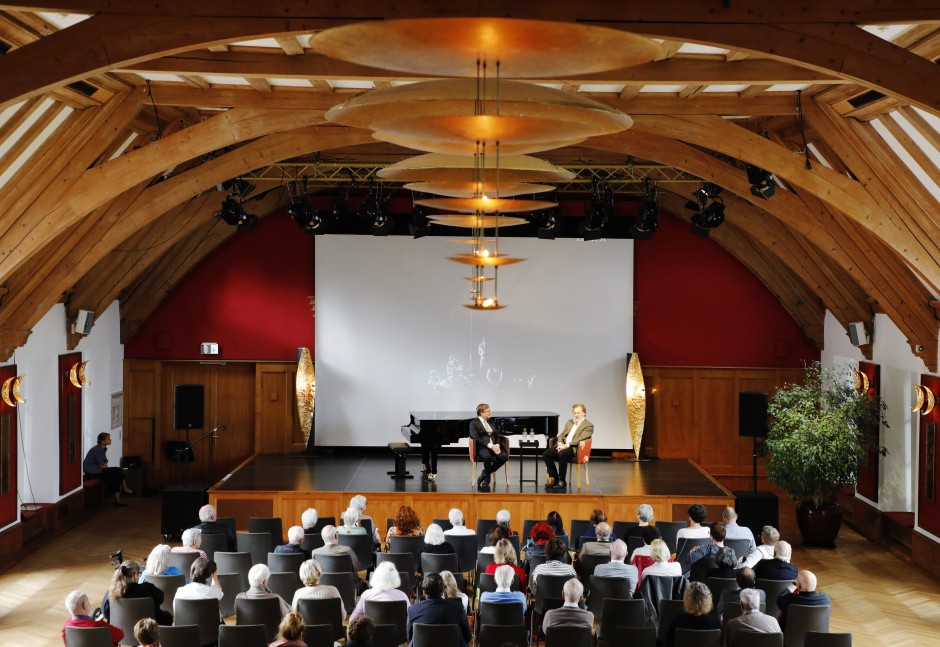Wikinger – the term brings to most people the characteristic dragon ships, bearded, unkempt men who terrified the inhabitants of the coasts of European seas and rivers. And even if it is now known that their helmets had no horns, the question arises as to how the Vikings really lived. Neil Price gets as close to the answer in his book as current science can. He draws a differentiated picture of a complex past about which we know a lot, but much of which remains unclear.
In doing so, he spans a wide arc, both in terms of space and time, because the book does not begin with the first known Viking attacks in England, but starts as early as the sixth century and traces the consequences of the fall of the Roman Empire for Scandinavia and Europe had its inhabitants. This first part is mainly about everyday life and the culture of the Scandinavians, about the family, the body, clothing, sexuality, religion and spirituality and their imagination, but also about power structures and traffic routes. You learn that table manners were very important and that there were many different types of bread – including “a kind of Nordic tortilla”. In these explanations, the focus remains on Scandinavia, the presentation is primarily based on archaeological findings. Here Price can fall back on his own wealth of experience and knows how to put the individual finds and finds together to form a vivid picture.
The large associations also included women and children
In the second and third part, the gaze is directed outwards, to the actual “Viking Age”, i.e. the time of raids and plundering. Price understands the term “Viking” very broadly, he uses it generally for the Scandinavians, because he not only takes into account the phenomenon of the raids themselves, but also the respective repercussions on Scandinavia. The slave trade, for example, played an important role because it attracted the workers that made the construction of large fleets possible in the first place. He has convincing arguments that the early Viking Age begins as early as 750, because a find near the Estonian town of Salme is dated to this: in 2008, two ships were discovered here that probably belonged to a high-ranking expedition from Sweden.

Neil Price: The True History of the Vikings.
:
Image: S. Fischer Verlag
Price then discusses the reasons and prerequisites for the first Viking raids before moving on to a second phase of attacks from the 830s through the late ninth century. This period saw a shift from individual raids to “seasonal campaigns,” as other researchers have noted. The large units, which also included women and children, cannot be described as classic “armies”; Price calls them “political organizations in their own right.” He aptly coined the term “hydrarchy” for these groups, which formed a larger association through mutual loyalties, for such an association was not led by one person, but had many heads, so to speak – like a hydra growing new heads , once you knock one off.
And what about Normandy?
Finally, Price looks at the Vikings’ attempts – with varying degrees of success – to settle in regions outside of Scandinavia: on the islands of the Orkneys and Hebrides off Scotland, in England and Ireland, in Brittany and Normandy, in Kievan Rus’, in Iceland, Greenland and North America. He also looks at the Varangian Guards in Constantinople and the trade relations with the Abbasid caliphate, as well as Christianization and the closely related formation of the Scandinavian kingdoms of Norway, Denmark and Sweden.
This third part of the account is the least coherent. The findings of research are clearly compiled here, but it is not entirely clear why Normandy, which emerged in the tenth century through the settlement of Vikings, is only dealt with briefly, while the Rus or Iceland are acknowledged in much more detail. One reason might be the author’s view that the Vikings had a differentiated but ultimately common culture, to which the “Normans” probably cannot be attributed because they had quickly integrated into Frankish society.
The book is a win for anyone who wants to get to know and understand the culture and way of life of the Vikings. It offers exciting reading, because the author knows how to present complicated relationships in a clear way. The translation is also successful, but a different title would have been desirable, because the English-language original does not speak of the “true” history of the Vikings. Rather, it is about “a” story and thus about one of the possible points of view. Neil Price consistently makes it clear where the limits of his and our current knowledge lie.
Neil Price: The True History of the Vikings. Translated from the English by Ursula Blank-Sangmeister. S. Fischer Verlag, Frankfurt am Main 2022. 768 p., ill., hardcover, €39.
















